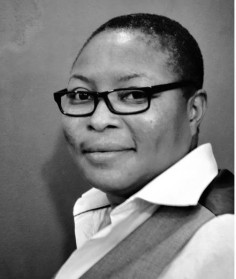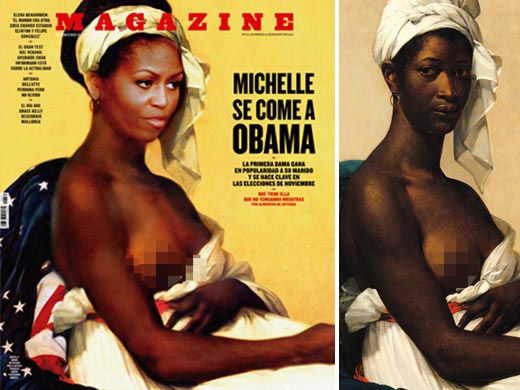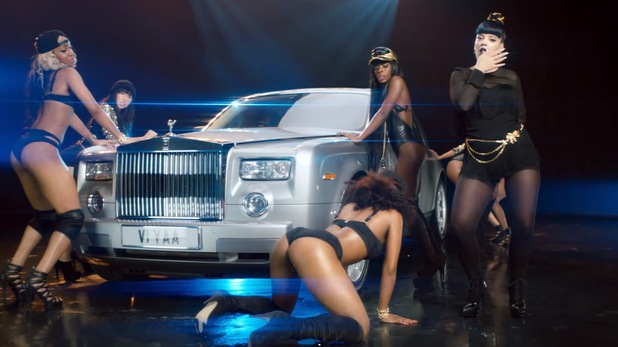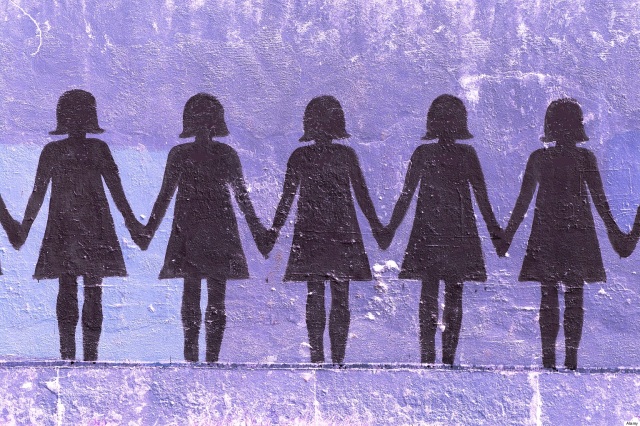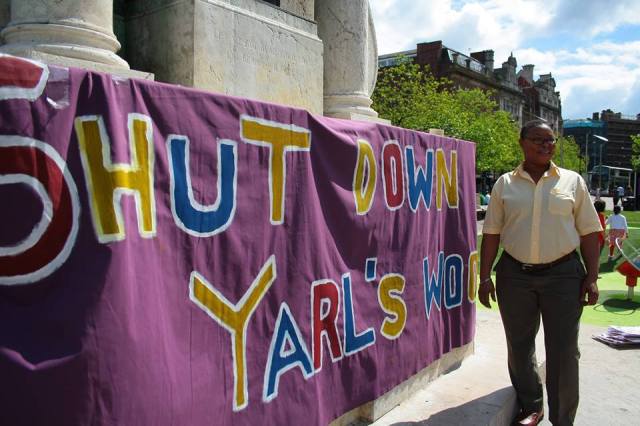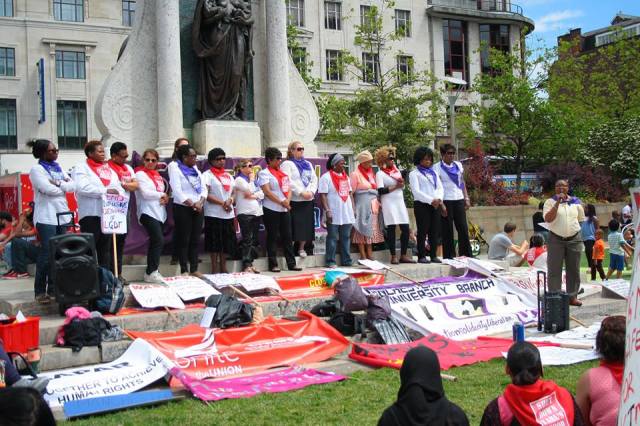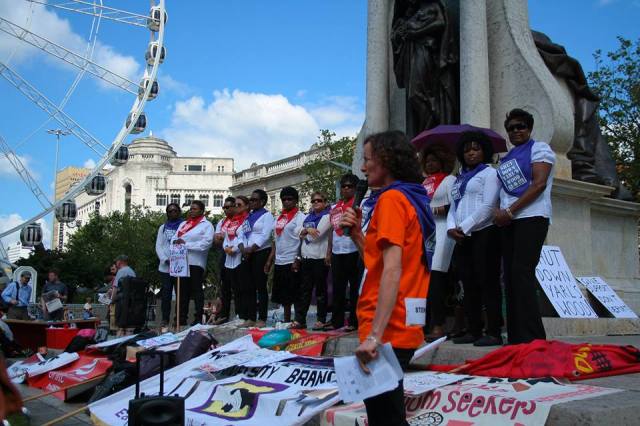By Marcia X
“I urge each one of us here to reach down into that deep place of knowledge inside
herself and touch that terror and loathing of any difference that lives there. See whose
face it wears. Then the personal as the political can begin to illuminate all our choices.”
-Audre Lorde
I am no stranger to racism. It is indeed a part of my everyday life. Malcolm X recalls in
his autobiography how he spent much of his youth in heavy white populated areas. For
example he was the only black child in his school. This was an informative experience
that was not the first and nor the last in understanding what it means to be a ‘minority’
in white spaces. I, too, have spent much of my childhood and adulthood in 90% white
neighborhoods and schools. It comes with a psychological price if your spirit does not
stand strong.
My practice is a tool I use for my feminism, an outlet I can utilize for educating others
and being politically active. I had hoped I would be able to work alongside and create
with other feminists, women who were aware of the struggle and willing to push
themselves and their art for social progression in our communities. Instead, I found
myself facing the worst racist micro-aggressions from these self-identified feminists.
At times, we as members of marginalized groups allow the victimization to go to our
heads, and instead of understanding and accepting one another, we take what’s
political and use it as a weapon in a personal way.
“Black people won’t be free until women are free.”
I have attempted to engage with these feminists and share my research on Black
feminist thought, womanist theory and intersectional feminism with them. I have
presented cases of misogynoir and other forms of racialized misogyny on various
women of color, and was met with apathy, blank stares and resistance to my approach
on feminist discourse. I was told that my race was not an issue I could take up in
feminism because it has nothing to do with being a woman. At first, I assumed these
young women just had not experienced life outside their respective counties and if I
shared more of my experience and research with them, they would see that as a
woman of color, I have issues that should be addressed within feminist discourse. As
time progressed throughout my second year, I was beginning to understand I would
not be successful.
Color-blind is a term that suggests there are those in our western society who don’t see
the color of another’s skin, thereby the person who is color-blind cannot possibly be
racist. It is not true. We all see color. We all notice the very physical attributes of
others. Assuming that as an individual white person you are color-blind and don’t need
to acknowledge the reality of a black persons skin, you render their physical being
mute by assuming it is like your white existence. Being “color-blind” negates the
presence of cultural values, norms and life experience of people of color. As an
individual, one may be able to ignore the color of a person’s skin, but society does not.
Being color-blind allows for the white person to ignore they are white, thus having
white privilege and never having to worry about harassment from police, lack of
positive representation in media, or representation in anything period. I speak about
this specific term because when I spoke about racism within the feminist movement,
white feminists in studio were uncomfortable, and to silence me said “But I’m colorblind
and I think it’s a good thing.” bell hooks knows better, as evident in the following
statement:
All white women in this nation know that their status is different from that of black women/women of color. They know this from the time they are little girls watching television and seeing only their images. They know that the only reason nonwhites are absent/invisible is because they are not white. All white women in this nation know that whiteness is a privileged category. The fact that white females may choose to repress or deny this knowledge does not mean they are #ignorant: it means they are in denial.
(Boyd, 2002)
“I saw a bag at River Island that reminded me of trashy black girls and I thought of
you.”
After hearing this statement from said color-blind feminist, I knew that my
cause was lost, and my quest for finding a feminist artistic community that was willing
to be in solidarity with me would not be easy as I had initially hoped. I am well aware
my art work will not speak to the issues ALL women face, but I believe that as students
we are able to transcend the physical aesthetics of a piece of work so we can reach a
level of understanding and compassion.
“Your paintings are nice, but I will never understand them because they are about
people of a different color.”
“Perhaps if you made work about feminism and not about black women it will be better
understood.”
This statement is reminiscent of the collective narcissism Charmaine A. Nelson in her
book Representing the Black Female Nude in Western Art speaks about concerning
how whites view art works either created by or centered on black women and men.
The inability to see the subjects in the work as real people, with real narratives is not
just a lack of apathy on white audience’s part, but a very real need to see themselves in
everything they come across. Due to the fact she is white and the subject of her work,
this feminist student artist believes that her message is universal to all women (Even
though her actions dictate that she is not interested in the narratives of all women). I
am not an ‘other’ to myself; I am Othered by audiences and those in my community.
Adrian Piper states that focusing on the otherness of an artist instead of the meaning
of the work they produce falsely presupposes a background of Euro-ethnic
homogeneity against which the artist can be identified as Other. “This perpetuates the
ideological myth of minority status on which racists rely to exercise their strategies of
disempowerment.”(Piper, 60) It is here in these statements where I believe there is
sufficient evidence to warrant an assessment of the curriculum in universities so there
are more lessons concerning the works by Blacks, women and gay creators.
My tutor told me that feminism has always been inclusive to women of color across all
classes. If this is the case, and if we are students, where is this information? Why are
there feminist artists in my course creating work centered on the white experience
that at the same time completely cuts the throat of women of color in their
communities? How is it possible that a white, feminist student is writing a dissertation
that ONLY focuses on white western girls, yet the dissertation and the work she
creates criticizes an African American singer? I am receiving a BA in Fine Art from a
top rated university in 2014, and yet I have to fight for equality from not only my
fellow feminist artists but the institution’s council so students of color can have control
and access to a focus group centered on their experience. The fight is very real.
Conclusion
“Black History Month isn’t my thing is it? Plus I have better shit to do.”
How does an artist such as myself respond to this situation without being casted as the
oh so typical Angry Black Woman trope? Although, don’t I have a right to be angry? I
have paid good money to work and learn in a safe environment. Free to be as Afro-
Latin, artistic and creative as I want to be.
I respond to history and those I must endure by creating work that empowers me and
respects those ancestors of mine who went thru the unspeakable. I had a white man
photograph me in a similar pose to the unnamed sitter in Portrait d’une Negresse. My
hair, hidden from sight, was wrapped up high, because I like so many other women
with Afro-Caribbean hair, view our head wraps not as signs of domestic labor but as a
reclaimed crown. My choice of clothing is insignificant, but what is important is that I
chose to wear them. I posed in front of my other works, I looked into the distance, into
the future, because I wanted to. This photograph was a means for me to reclaim the
typical representation of Black women/women of color in art. Not only to take ‘it’ back,
but to create with full autonomy, agency and pride.

Experiments with this photograph left me satisfied. I cut out, in the shape of an X, the
unnamed sitter’s face, and placed her over my own. I wanted this woman to be in a
position of power since history has her marginalized as just a figure for a cause that
brought her what I can only assume was zero freedom. This cutting and pasting was a
political act only her spirit and I will share. I have been able to identify myself within
this contemporary art space without feeling as if I have to Uncle Tom myself as an
artist in order to connect with an audience.

“It’s as if our lives have no meaning without the white gaze.” -Toni Morrison
Reflecting upon the work and life of Jean Michel Basquiat, I was reminded about the
significance of ensuring Afro-Latino’s space in the legacy of contemporary art.
Basquiat’s work spoke a vernacular his white audiences didn’t understand unless they
framed his work to the likes of Warhol, de Kooning, Pollock and Rauschenberg. The
white Euro-centric gaze refused to connect his works with any traditions in African or
Puerto Rican culture or artistic tropes. Although he is often placed stylistically within
a white male art club which has a propensity to close its doors to those outside of those
categories, the content embedded in the canvas speaks specifically to those outside of
the club. This assessment of Basquiat’s work inspired me to appropriate one of his best
known symbols: the crown, the crown so often denied to us as people of color.
Basquiat’s crown is very distinct like most of the symbols he painted. In order to be a
driving force in widening the artistic vernacular in contemporary art, across both
Black and mainstream categories, I incorporated his symbol into the work. In a group
crit with my peers at university, I found that my theory as to whether or not this
symbolic appropriation would work was successful.
“I don’t know too much about Basquiat’s work, but I know that he was making work
like, in the 80’s, when there was a lot of racism happening and that he was about black
empowerment. So I guess, that works if you paint it on top of the portrait. It’s like
graffiti. As if someone thought this person was deserving of a crown.” T Davies
 Marcia X was born and raised in Chicago IL to immigrant parents in 1985. Inspired by her early travels to the Caribbean and US history and politics, she predominantly works in themes relating to the experience of the Diaspora, history, feminism, politics and socioeconomic issues. As a multidisciplinary artist, her mediums vary from print to installation, and currently is exploring minimalist abstract painting. She has her BA in Fine Art and is furthering her studies to attain an MA in Political, Social and International Theory. She lives and works in the Diaspora.
Marcia X was born and raised in Chicago IL to immigrant parents in 1985. Inspired by her early travels to the Caribbean and US history and politics, she predominantly works in themes relating to the experience of the Diaspora, history, feminism, politics and socioeconomic issues. As a multidisciplinary artist, her mediums vary from print to installation, and currently is exploring minimalist abstract painting. She has her BA in Fine Art and is furthering her studies to attain an MA in Political, Social and International Theory. She lives and works in the Diaspora.
